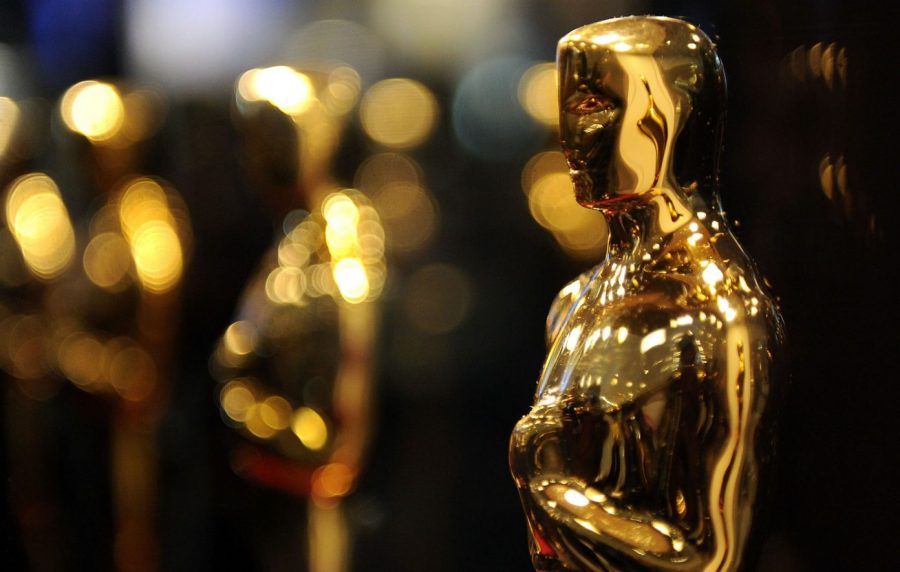The Oscars diversity requirements: How necessary are they?
Junior Nadia Bidarian and sophomore Troy Nevil take juxtaposed stances.
The new requirements are an amazing way to increase diversity in movies, as in the past, many minorities were underrepresented in the movie industry.
By Troy Nevil
On Tuesday, Sept. 8, the Academy released a statement regarding new requirements for the Oscars, called the “Academy Aperture 2025” initiative. The purpose of this initiative is to improve diversity throughout movies, so that they better reflect the common movie-going audience.
According to the Academy President David Rubin, “The aperture must widen to reflect our diverse global population in both the creation of motion pictures and in the audiences who connect with them. The Academy is committed to playing a vital role in helping make this a reality.”
Racial discrimination has become way more prevalent over the past few months. We have seen an increase in police brutality against African Americans, as well as many hate crimes. As a result, people are coming together to work and bring change to this world.
The movie industry has a large impact on society, as movies can often highlight real-world problems and portray what the daily life of a person looks like. In order to reflect those things properly, movies need to be diverse, just like our world is.
For that reason, it’s great to see that the Oscars and the Academy are taking a step forward to increase diversity within movies. Audiences should feel welcome and comfortable when watching movies, and some of that comfort can come from the fact that a movie is more racially diverse.
To bring this comfort to audiences, the Oscars will implement new standards that movies will need to meet. Out of the four standards made, movies will have to meet two of them in order to be eligible for an award.
An example of one of the standards is Standard A, which supports on-screen representation and themes. For movies to pass this standard, they must: include a lead actor or significant supporting actor that is from an underrepresented racial group, have 30% of its actors in secondary or minor roles be from at least two underrepresented groups, or have the main storyline follow an underrepresented group. Underrepresented groups include women, the LGBTQ+ community and people of color.
Other standards are quite similar to this one, and require that there is representation within every aspect of a movie, including editing, acting, producing, interning, among others.
Some people may argue that movies should naturally be diverse, and instead of mandating diversity in movies, we should encourage it. While I agree that movies should be naturally diverse, the constant acts of discrimination and hate all over the world have unfortunately brought us to a time where diversity needs to be mandated, otherwise there will never be enough of it.
It’s great to see that industries who have a large impact on the world are crafting changes to make our world a better place. Many groups such as the LGBTQ+ community have been underrepresented in movies over the past few decades, and it’s great to see that change is happening to make groups feel more included.
New diversity requirements for the Oscars are a step backward and harm more than help minorities.
by Nadia Bidarian
In an effort to promote diversity in Hollywood, the Academy has released a mandate for all films wanting a nomination for Best Picture. In short: White men gotta go.
Starting in 2024, films seeking a prized Best Picture nomination at the Oscars must meet two of four new diversity standards the Academy recently announced.
To meet Standard A regarding on-screen representation, the film must meet one of the following two criteria: have one lead actor be from an underrepresented racial group (Asian, Hispanic, Black, Indigenous, Middle Eastern or Pacific Islander) or have at least 30 percent of actors in minor roles be from at least two of the following underrepresented groups: women, LGBTQ+, people with cognitive or physical disabilities, or people from the racial groups mentioned previously.
Standard B covers diversity behind the scenes, among leadership and department heads. Standard C requires that the film provides internships and other training opportunities to underrepresented groups, meaning women, LGBTQ+, disabled people and members of minority racial groups. Lastly, Standard D states that the film must employ individuals from the aforementioned underrepresented groups on their marketing and publicity teams.
In order to understand the forces that compelled this mandate, we must look back upon the Academy’s shaky track record in terms of diversity. Five years ago, the hashtag #OscarsSoWhite spread across social media in protest of the lack of diversity among Oscar nominees. The most likely cause of this disparity was that the committee that votes on Oscar nominations, the Academy, was reportedly 94 percent white and 77 percent male as of 2012, according to the Los Angeles Times.
In response to the public outcry, the Academy launched its A2020 initiative, committing to doubling the number of members of color and the number of women in its voting ranks by the end of 2020. The Academy has already met and surpassed these goals, but their efforts at diversity have not ceased.
Diversity, inclusivity, representation—all great things, right? Of course. Mandating them? Not so much.
Firstly, these requirements are simply unnecessary. In our social media-driven world, moviegoers find it not only easy but worthwhile to point out the lack of diversity in movies. If the only people nominated for the major categories at the Oscars are White, the people can and will sound the alarm, and rightfully so. Movies that star minorities should not be treated as inferior to movies starring White people.
As the Academy demonstrated with its A2020 initiative, our protests work. That’s exactly the issue with a diversity mandate: the people (you, me and everyone else who appreciates a good movie) are unafraid to speak up about a lack of diversity, and as a result of our protests, the films that receive such sought-after accolades as Best Picture have become more diverse, no mandates necessary.
Take the Best Picture winners of the last four years. In 2017, “Moonlight,” a film depicting the tumultuous coming-of-age of a gay Black man in Miami, won Best Picture with an all-Black cast and director. In 2018, “The Shape of Water” won the prized award with a Mexican director and a mute protagonist. Similarly, 2019’s Best Picture winner, “Green Book,” told the story of a world-class Black pianist touring the South in the ‘60s. Finally, and perhaps most shockingly, Korean director Bong Joon-ho and his Korean cast took home the Best Picture award for “Parasite,” a movie about class warfare and greed, in 2020—the first movie not in the English language to receive Best Picture.
I have watched all four of these movies and agree wholeheartedly that each deserved the Academy Award it received. But the point still stands: Diversity need not be mandated. It has been achieved organically and beautifully in the Oscars ceremonies of years past, and there is no reason why diversity in film should be forced when our culture is pushing for on-screen diversity naturally.
So we agree, then, that the diversity requirements are unnecessary. But what’s the harm in them?
Imagine the conversation that will occur behind the scenes of moviemaking once these rules are implemented. Guided by a checklist instead of by talent and art, a director begins the hiring process for department heads. Rather than ask about a person’s achievements, experience, or creativity, the primary concern becomes: What sex am I looking to hire? What race am I looking to hire? What sexuality am I looking to hire? Does half Latino meet the quota, or must they be full? What about three quarters?
It doesn’t matter which role the Black man, or gay man, or Latina woman will fill, necessarily, only that he or she fills it. A box is checked, a standard is met and the director is on track to receive his shiny award.
There is also a chance that these diversity quotas won’t actually increase diversity. For one, Vox found that overwhelmingly White movies such as “The Irishman” fit the requirements just fine, mainly due to the director’s frequent collaborations with women.
Secondly, you do not have to be a hateful bigot to begin believing, even subconsciously, that once you have the minimum amount of Black, brown, female or LGBT people working on your film, you don’t need to hire any more. That is exactly the train of thought that develops when we judge people based on their skin color, gender, or sexuality rather than their personal merits—when we treat people as tokens to collect to fill a required quota. Thirty percent of our tech crew are women? Check. Two department heads are gay? Check. The production assistant is disabled? Check. And so on and so forth.
In taking this stance, I’m not pronouncing myself as spokesperson for White men, the only group notably absent from the Academy’s underrepresented laundry list (Basically, if you look like Chris Pratt, close the door on your way out). I’m a Middle Eastern woman who, if I were to enter the film industry, would likely benefit from these policies.
Yet these guidelines, although neither expressly difficult to pass nor particularly revolutionary, are harmful to the exact people they claim to help. We must find a middle ground between two extremes, where we can fight for proper representation of minorities yet don’t feel pressure to stay silent when new rules claiming to be inclusive are just the opposite.
I don’t know if these Oscar guidelines will radically change the film industry. Since many standards address the movie-making process rather than on-screen representation, the changes may not even be noticeable. But these guidelines are just one facet of a growing movement to divide and make tokens out of real people with unique experiences and talents, people who have much more to offer to the world than their race, gender and sexuality, all of which are out of their control.
We must sound the alarm when big companies implement policies that claim to promote equality but in actuality hinder it. The Academy knows the people have a voice, because they’ve turned their ears to us before. It’s time they listen again.

Hey guys! I'm just your local high school senior procrastinating college apps and going through senioritis. In my free time, I love to sleep, eat all food in existence, drive around with friends (and waste...




